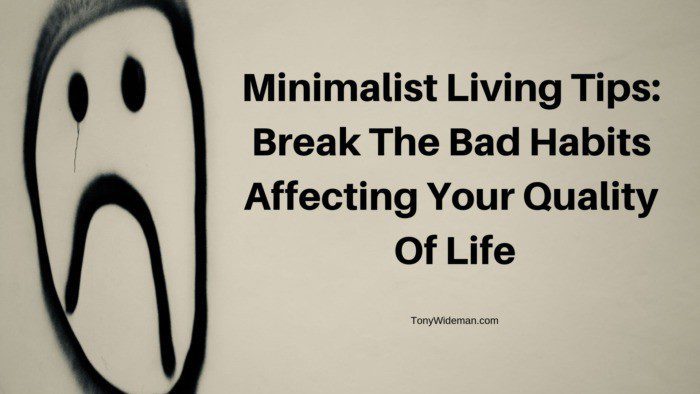Unapologetic Guide to Creating a Minimalist Kitchen
The minimalist kitchen concept has gained tremendous popularity and is a popular lifestyle choice for many. It offers an aesthetically pleasing environment and a highly functional space.
I love a clean, efficient kitchen. Clean and clear counters make me want to create delicious, healthy meals.
His concept is not limited to decluttering and simplifying one’s surroundings; it also extends to various aspects of life, including the kitchen. Minimalism in the kitchen is a practical approach to creating a streamlined and efficient cooking space.
I will take you through the steps to create a minimalist kitchen that is visually appealing and highly efficient.
What is Minimalism in the Kitchen?
Minimalism in the kitchen involves simplifying and decluttering the space for meals. It’s about creating an environment that promotes functionality and reduces unnecessary distractions.
A minimalist kitchen is free from excess gadgets, tools, and items that aren’t essential for cooking and meal preparation.
Benefits of Creating a Minimalist Kitchen
- Efficiency: A minimalist kitchen allows you to find what you need quickly, making meal preparation more efficient.
- Less Stress: A clutter-free kitchen allows you to focus on cooking without the stress of a disorganized space.
- Saving Money: You’ll avoid buying unnecessary kitchen gadgets and tools, which will save you money in the long run.
- Healthier Eating: A clean and organized kitchen encourages more nutritious food choices.
- Environmental Impact: Minimalism often produces less waste and a reduced ecological footprint.
Essential Minimalist Kitchen Tools
While embracing minimalism, it’s necessary to have the right tools.
These include high-quality knives, cutting boards, mixing bowls, and a few versatile kitchen gadgets.
Minimalist Kitchen Design
Minimalist kitchen design comprises clean lines, a neutral color palette, and open spaces.
Consider open shelving instead of upper cabinets to reduce visual clutter.
Organizing Your Kitchen Space
Use storage solutions like drawer dividers, pull-out pantry shelves, and clear containers to keep everything organized and easily accessible.
Sustainable Minimalism in the Kitchen
Minimalism in the kitchen can also extend to sustainability.
Choose reusable and eco-friendly products such as cloth napkins, glass food storage containers, and sustainable kitchen cleaning supplies.
Minimalist Meal Planning
Plan your meals to reduce food waste and save time.
Keep a minimalist pantry stocked with essentials to create various meals without overstocking.
Cooking with Minimalism
Embrace simple cooking techniques and recipes.
Minimalism encourages using fresh, high-quality ingredients to create delicious and uncomplicated meals.
Minimalism and Food Waste
By reducing your kitchen clutter and planning meals efficiently, you can significantly reduce food waste, which is cost-effective and environmentally friendly.
Minimalism in Kitchen Decor
Choose kitchen decor that aligns with your minimalist theme.
Consider artwork or decor items that have a simple and clean design.
Time Management in a Minimalist Kitchen
A decluttered and organized kitchen makes managing your time and daily cooking tasks easier.
Minimalism for Families
Minimalism in the kitchen is achievable for families.
Involve everyone in decluttering and emphasize the benefits of a more straightforward, organized space.
Declutter Your Kitchen
The first step in embracing minimalism in the kitchen is decluttering.
Start by reviewing your kitchen items and eliminating duplicates or things you rarely use. Donate or recycle items that are in good condition.
Start with a Clean Slate
To achieve a genuinely minimalist kitchen, the first step is decluttering.
Begin by emptying all cabinets, drawers, and countertops.
This provides a clean slate to work with.
Assess and Prioritize
Carefully assess each item you’ve removed from your kitchen.
Prioritize essentials and consider donating or disposing of items you rarely use.
A minimalist kitchen should only contain items that serve a purpose.
Invest in Quality Storage Solutions
To maintain a clutter-free space, invest in high-quality storage solutions.
Drawer dividers, pull-out pantry shelves, and under-cabinet organizers can help you maximize your kitchen’s storage potential.
Streamline Your Kitchen Design
Choose a Neutral Color Palette
Opt for a neutral color palette, such as whites, grays, and soft pastels.
These colors create a sense of openness and tranquility, essential in a minimalist kitchen.
Sleek Countertops
Select clean and sleek countertops, preferably made of natural materials like quartz or granite.
Avoid cluttering the surface with small appliances and unnecessary decorations.
Seamless Cabinetry
Consider handleless cabinets with a seamless design for a minimalist look.
These cabinets offer a sleek and uncluttered appearance.
Open Shelving
Incorporate open shelves to showcase a few carefully chosen decorative items.
Ensure they are not overcrowded to maintain the minimalist aesthetic.
Functional Minimalism
Essential Kitchen Tools
In a minimalist kitchen, choose multi-functional and high-quality kitchen tools.
A good set of knives, a versatile cutting board, and efficient cookware are essential.
Organized Work Zones
Design your kitchen with organized work zones, making meal preparation efficient.
Place utensils, cookware, and ingredients in designated areas for easy access.
Maintenance and Cleaning
A minimalist kitchen is easy to maintain and keep clean.
Regularly declutter and wipe down surfaces to prevent the buildup of unnecessary items and dirt.
Lighting and Ambiance
Natural Lighting
Maximize natural light in your kitchen by using sheer or translucent window coverings.
Natural light adds to the minimalist charm and provides a welcoming atmosphere.
Ambient Lighting
Incorporate soft, ambient lighting to create a warm and inviting atmosphere.
Consider pendant lights or under-cabinet LED lighting for a modern touch.
Sustainability in a Minimalist Kitchen
Eco-Friendly Choices
Make sustainable choices when it comes to kitchen appliances and materials.
Energy-efficient appliances, recycling bins, and composting options align with the minimalist and eco-conscious lifestyle.
Reduce Food Waste
Incorporate meal planning and food preservation techniques to minimize food waste in your kitchen.
This not only aligns with minimalism but also contributes to a greener lifestyle.
Conclusion
In conclusion, creating a minimalist kitchen is about decluttering and carefully curating your space for maximum functionality and aesthetic appeal.
Embracing minimalism in the kitchen can lead to a more efficient, organized, and enjoyable cooking experience.
By decluttering, investing in essential tools, and adopting sustainable practices, you can create a kitchen that promotes a healthier lifestyle and reduces environmental impact.
FAQs
- Is minimalism in the kitchen suitable for large families?
- Yes, minimalism in the kitchen is adaptable for families of all sizes. Involving everyone in the process can help create an organized and functional space.
- What are the essential tools for a minimalist kitchen?
- Essential tools include high-quality knives, cutting boards, mixing bowls, and versatile kitchen gadgets.
- How can minimalism in the kitchen reduce food waste?
- By planning meals efficiently and reducing clutter, you can significantly reduce food waste, save money, and reduce your environmental footprint.
- Can I add personal touches to a minimalist kitchen decor?
- Absolutely. Minimalist decor can include personal touches but should be simple and align with the clean and uncluttered theme.
- How can I make a sustainable choice in a minimalist kitchen?
- To align with your minimalist and environmentally conscious approach, choose sustainable and eco-friendly products, such as glass food storage containers and reusable kitchen supplies.










